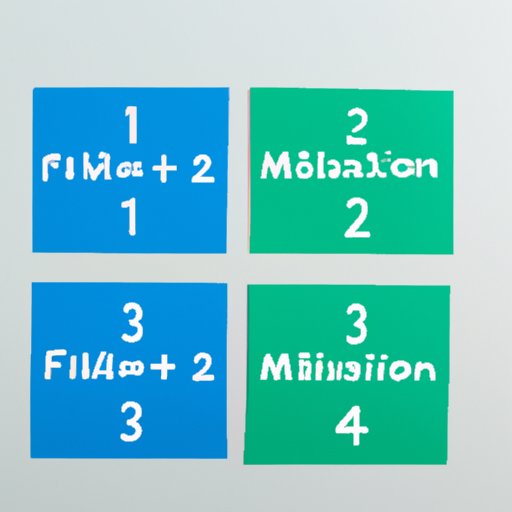
I. Introduction
Multiplying fractions and whole numbers can be a challenging concept to grasp. However, understanding this process is essential to solving math problems and working with fractions in everyday life. This article aims to provide readers with a simple, step-by-step guide on how to multiply a fraction by a whole number.
II. Step-by-Step Guide
Multiplying a fraction by a whole number may seem daunting at first, but it can be broken down into simple steps:
- Multiply the numerator of the fraction by the whole number
- Write the original denominator below the result
- Simplify the resulting fraction if possible
For example, let’s say that we want to multiply 2/3 by 4:
Step 1: 2 x 4 = 8
Step 2: Write the original denominator below the result: 8/3
Step 3: Simplify the fraction if possible (in this case it isn’t): 8/3
Remember that if the resulting fraction is an improper fraction (i.e., the numerator is larger than the denominator), it can be simplified into a mixed number. For example, 17/4 can be simplified to 4 1/4.
When working with mixed numbers, it’s best to convert them to improper fractions before multiplying. For example, if we want to multiply 2 1/3 by 5:
Step 1: Convert the mixed number to an improper fraction: 2 1/3 = (2 x 3 + 1)/3 = 7/3
Step 2: Multiply the numerator by the whole number: 7 x 5 = 35
Step 3: Write the original denominator below the result: 35/3
Step 4: Simplify the fraction if possible: 11 2/3
By following these steps, you can easily multiply fractions by whole numbers.
III. Real-Life Application
Multiplying fractions by whole numbers has practical applications in everyday life. For example, recipes often call for ingredients in fractions, and you may need to multiply a recipe to make it larger or smaller. When working on DIY projects, you may need to calculate the amount of material required in fractions, such as the amount of paint needed to cover a wall. Architects and engineers also use fractions to measure and design structures, and understanding how to multiply fractions by whole numbers is essential in these fields.
IV. Visual Aids
Visual aids like diagrams and videos can be helpful in understanding the process of multiplying fractions by whole numbers. Infographics can illustrate the process in a clear, concise manner, making it easier to understand and remember. Videos can demonstrate the process step-by-step, showing it in action and breaking it down into manageable parts. It’s essential to use visual aids in combination with written material to reinforce learning effectively.
V. Practice Problems
To master the concept of multiplying fractions by whole numbers, practice is key. Here are some practice problems to help you put the concept into action:
1. 2/5 x 3 =
2. 1/2 x 6 =
3. 3/4 x 8 =
4. 2/3 x 9 =
5. 5/6 x 12 =
Answers:
1. 6/5
2. 3
3. 6
4. 6
5. 10
By practicing these problems, you can sharpen your skills and build confidence in multiplying fractions by whole numbers.
VI. Comparison to Other Concepts
To better understand how to multiply fractions by whole numbers, it’s helpful to compare it to other math concepts. Adding and subtracting fractions, for example, share some similarities with multiplying fractions, such as finding a common denominator. However, unlike adding and subtracting fractions, the denominators do not need to be the same for multiplication. It’s essential to recognize these similarities and differences to build a strong foundation in math.
VII. Conclusion
Multiplying fractions by whole numbers may seem like a daunting task at first, but with practice and the right mindset, anyone can master this concept. By following this guide, you can break down the process into simple, easy-to-follow steps and apply it to real-world situations.




